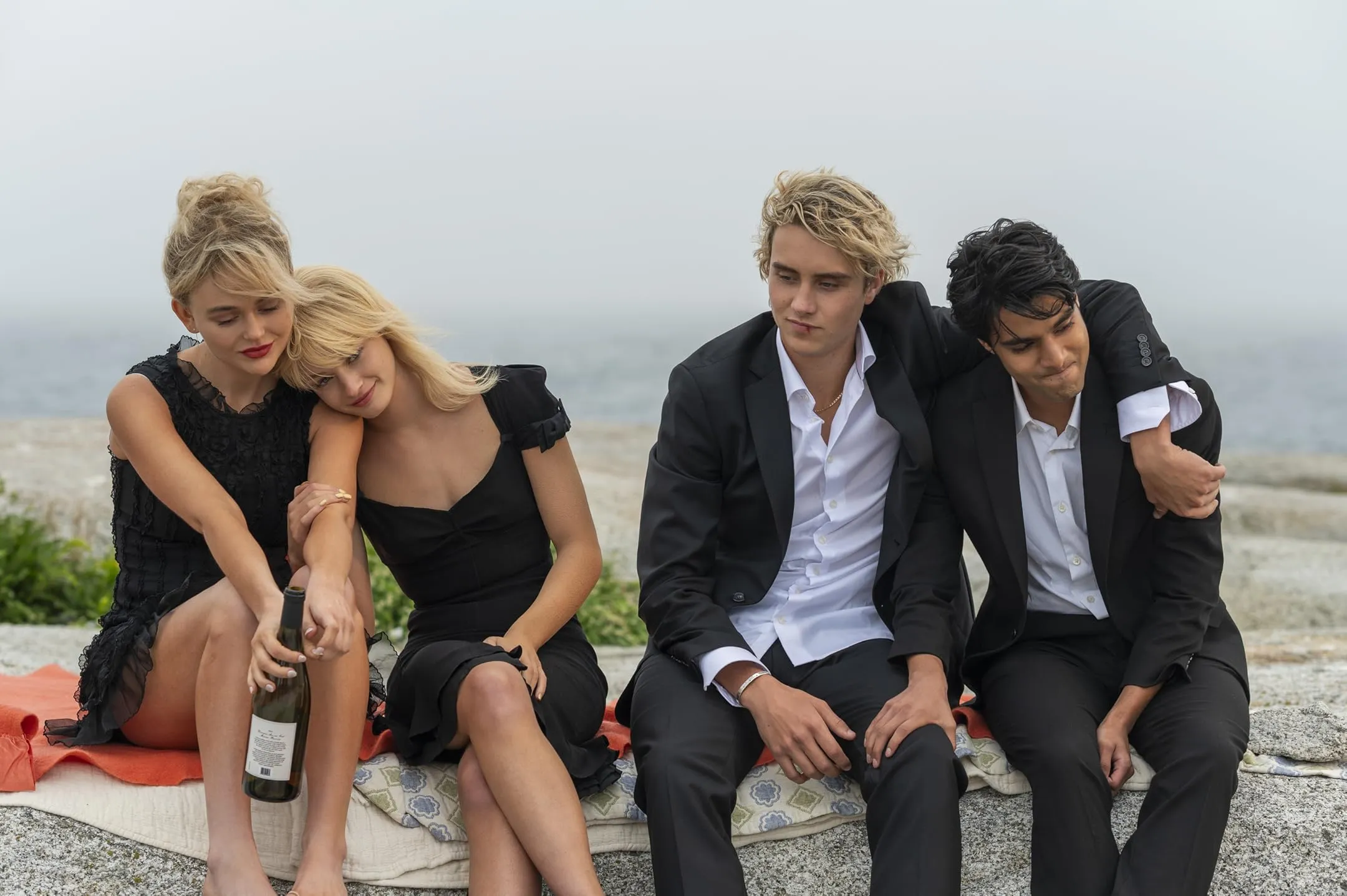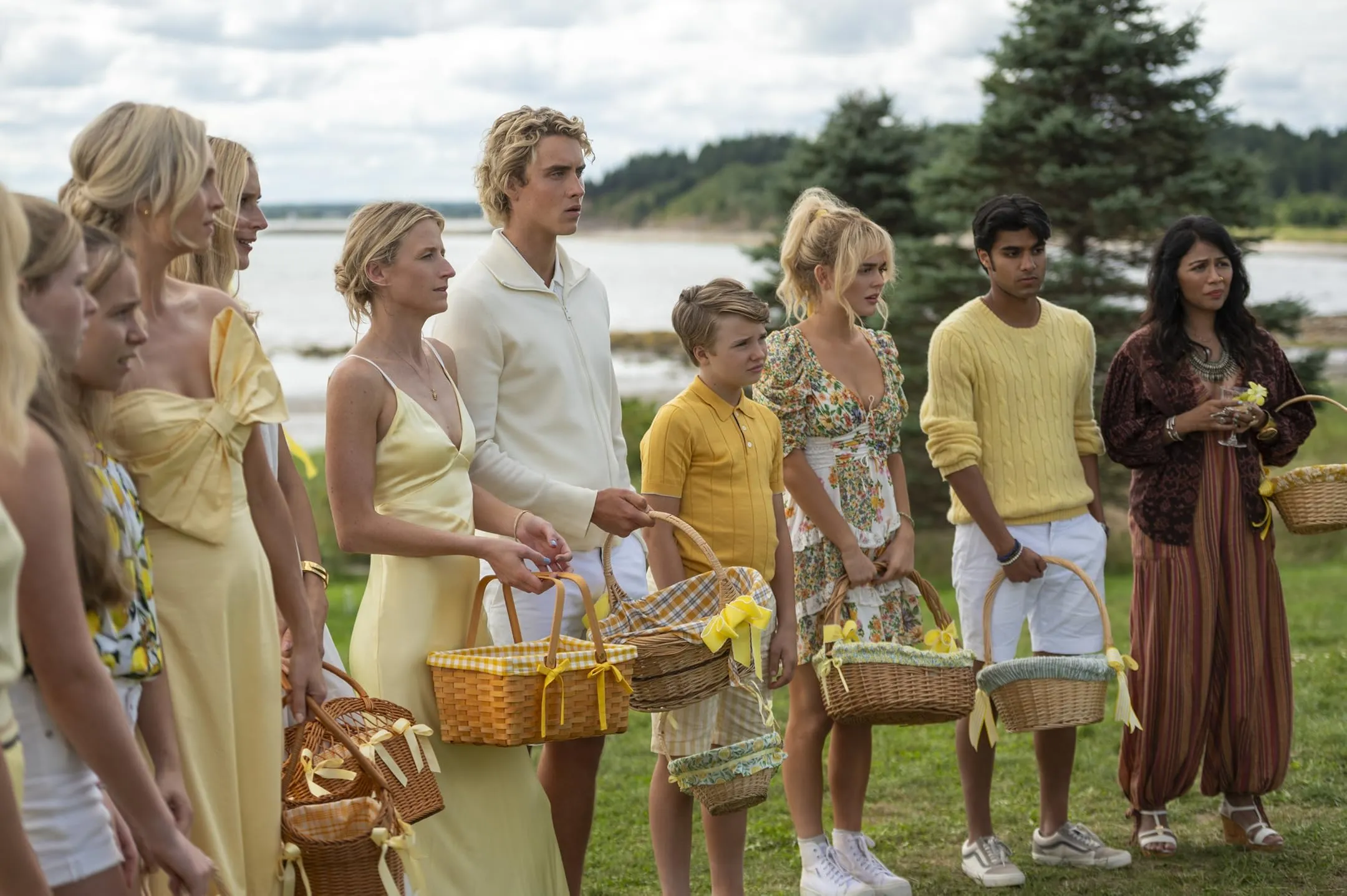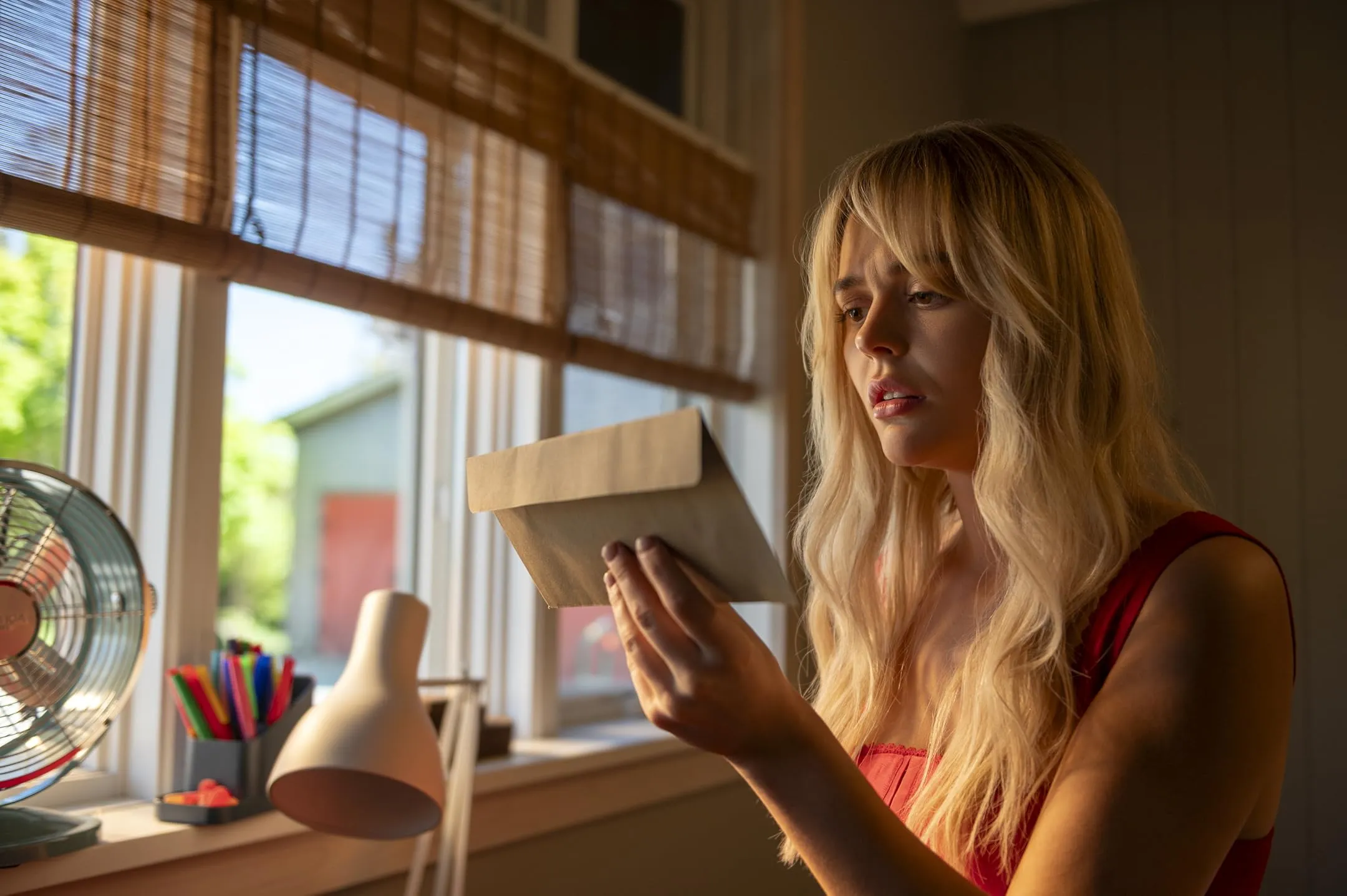Streaming platforms continue their fascination with the dysfunctions of the fantastically wealthy, and We Were Liars arrives as a new exhibit. On the private shores of Beechwood Island, the Sinclair family operates like American royalty, a dynasty built on pristine appearances and brittle expectations where image is the primary currency. This is a world of old money, where summers are an institution and smiles are carefully maintained.
At its center are four teenagers, the so-called “Liars”: cousins Cadence, Johnny, and Mirren, along with family friend Gat. Their summer alliance offers a fragile refuge from the transactional affections of their parents.
The narrative ignites when Cadence returns for “Summer 17” bearing a traumatic brain injury and a gaping hole in her memory of the previous year. A terrible accident occurred, yet a conspiracy of silence greets her every question. Her quest to reconstruct the past pits her against the very family determined to keep it buried, crafting a mystery from the poisoned soil of privilege.
A Memory Built for Streaming
The series structures itself around the binge model, employing a narrative architecture now familiar in streaming-era thrillers. We oscillate between two timelines: the sun-drenched, fateful “Summer 16” that precedes the disaster, and the tense, interrogative “Summer 17” that follows.
To guide the viewer, the show employs a classic young adult visual shorthand. Protagonist Cadence, once blonde like the rest of her Sinclair clan, returns with dark hair, a convenient signifier of her trauma and alienation from the family’s homogenous ideal. This transformation is not just personal; it is a visual break from the tribe.
This story is driven by Cadence’s fractured recollection. Her amnesia functions as the central engine, turning her own mind into an unreliable narrator and forcing the audience to question every flashback. The family’s response—a unified, therapeutic wall of silence—acts as a form of institutional gaslighting, where the preservation of the family unit requires the suppression of an individual’s truth.
While this creates a compelling paranoia, the mystery is stretched across eight hour-long episodes, a length that feels more dictated by platform economics than narrative necessity. The result is a slow drip of information, a pacing that risks tedium as it methodically lays track for a conclusion that arrives much later than its initial momentum suggests.
The Heirs and the Architects of Ruin
The show’s central conflict is drawn along a sharp generational schism, pitting the young heirs against the adults who shaped their gilded cage. At the story’s heart, “the Liars” form a pocket of resistance. Their bond feels less like simple friendship and more like a necessary alliance against the cold, transactional nature of their family.
The young ensemble cast performs the difficult task of making their immense privilege feel secondary to their emotional turmoil. The chemistry between Emily Alyn Lind, Joseph Zada, Esther McGregor, and Shubham Maheshwari provides the series with its most authentic moments.
Cadence’s search for truth drives the plot, while the other Liars navigate their own prisons of expectation. Gat’s journey of social consciousness, in particular, functions as the show’s unsubtle attempt to inject a critique of race and class into this hermetically sealed world of whiteness.
In stark contrast, the adult Sinclairs are presented less as people and more as monuments to moral decay. Patriarch Harris Sinclair, played with chilling stillness by David Morse, is a cartoonishly malevolent figure. He is the unambiguous source of the family’s poison, a master manipulator who delights in pitting his daughters against one another for scraps of inheritance.
Those daughters—Penny, Carrie, and Bess—are studies in arrested development, forever competing for the approval of a man who offers none. The series makes little attempt to humanize them, portraying them as intensely unlikable figures defined by greed and resentment. This is a deliberate narrative choice; it flattens the potential for complex family drama but powerfully sharpens the justification for the teenagers’ eventual rebellion.
An Autopsy of Entitlement
At its most ambitious, the series performs an autopsy on the pathologies of old money. Wealth here is not a backdrop; it is the primary antagonist, a corrosive agent that warps every relationship and hollows out any sense of morality. The show’s attempts at social critique are channeled almost entirely through Gat, the Liars’ lone person of color and designated outsider.
His presence forces the narrative to acknowledge its own setting of extreme white privilege. Yet, the execution can be clumsy. Gat’s sudden post-India social awakening sometimes feels like a hastily added course on colonialism, delivered with the earnestness of a gap-year student. It’s a blunt instrument for a delicate conversation, making its points about prejudice with an unsubtle force that can undermine their gravity.
This critique of class is directly linked to the show’s exploration of generational dysfunction. The family’s vast fortune is the weapon Patriarch Harris wields to control his children, turning sister against sister in a desperate battle for their inheritance.
This financial battlefield creates a clear pipeline of generational trauma, as the anxieties and failings of the parents are inevitably passed down to their children, who must then decide whether to perpetuate the cycle or burn it down. Beneath all the social commentary and mystery, however, the story’s most effective emotional current is grief.
The central amnesia is more than a plot device; it is a psychological shield against an unbearable loss. The mystery the Liars seek to solve is not just about secrets and lies but about confronting a profound, heartbreaking sorrow that gives the gilded melodrama its surprising weight.
Manufacturing Paradise
The series excels at manufacturing the aesthetic of aspirational wealth, creating a world so visually appealing it borders on parody. The production design of Beechwood Island is immaculate, a visual language of opulent beach houses, gourmet meals, and expensive casual wear borrowed from luxury lifestyle blogs.
This sun-bleached perfection is, of course, intentional. It serves as a stark, ironic backdrop for the moral rot festering within the Sinclair family, making their ugliness all the more pronounced against the beauty of their surroundings.
Technically, the direction often leans on a formulaic playbook for teen television. A heavy-handed pop soundtrack dictates the emotional temperature of nearly every scene, leaving little room for subtlety. The reliance on this musical shorthand feels like a signature of the showrunners, a tool that sometimes overpowers the performances.
Each episode concludes with a near-identical dramatic reveal, a rhythmic device built to prompt the streaming platform’s auto-play feature. And for a series so concerned with maintaining a flawless veneer, the occasional production flaw, like a noticeably poor wig, provides an amusing and unintentional crack in the facade, briefly shattering the polished illusion.
The Lie That Lingers
For a series that takes its time building atmosphere, We Were Liars exhibits a peculiar structural imbalance in its final hour. After stretching its mystery across a languid season, the show sprints through its complex explanations in a cluttered, breathless finale.
The motivations behind the climactic event feel underdeveloped, forcing the audience to accept a drastic turn that lands with more perplexity than inevitability. While the emotional core of the resolution holds a certain power, its impact is diminished by the frantic rush to tie up loose threads, making the long-awaited payoff feel less earned and more expediently delivered.
The emotional weight of this reveal is immediately undercut by the show’s final, baffling minutes. In a significant deviation from the novel’s famously conclusive ending, the series tacks on a tonally jarring cliffhanger.
This is not a thoughtful reinterpretation; it is a cynical, franchise-building maneuver that feels airlifted from another series entirely. It betrays the source material’s devastating finality in favor of an open-ended mystery hook designed explicitly to bait a second season. In its attempt to secure a future, the show compromises its present.
Ultimately, the series stands as a slick, watchable melodrama, carried by the charisma of its young cast and the potency of its central question. The sun-soaked teen angst and “eat the rich” commentary provide a solid foundation for a binge-watch. Yet its architecture is a clear product of the streaming age: bloated in the middle and appended with a sequel hook that diminishes the power of the story it just told.
We Were Liars Filmed in Nova Scotia during summer 2024, it premieres worldwide on Prime Video on June 18 2025, with the full season available at 12 a.m. PT/3 a.m. ET.
Full Credits
Director(s): Nzingha Stewart, Erica Dunton, So Yong Kim, Tara Miele
Writers: Julie Plec, Carina Adly MacKenzie, Scarlett Curtis, Fola Goke-Pariola, Sid Gopinath, Aditya Joshi, Gursimran Sandhu, Allison Sanchez, Maya Vyas, E. Lockhart
Producers and Executive Producers: Julie Plec, Carina Adly MacKenzie, Emily Cummins, E. Lockhart
Cast: Emily Alyn Lind, Shubham Maheshwari, Esther McGregor, Joseph Zada, Caitlin FitzGerald, Mamie Gummer, Candice King, Rahul Kohli, David Morse, Wendy Crewson
Director of Photography (Cinematographer): Simon Duggan
Composer: Michael Suby
The Review
We Were Liars Season 1
While We Were Liars is a slickly produced teen melodrama, its strong central mystery and charismatic young cast are undermined by significant structural flaws. The series successfully captures the rot beneath a veneer of old-money perfection, but its bloated pacing gives way to a rushed finale. The show’s most critical failure is a cynical, franchise-baiting cliffhanger that betrays the source material’s devastating emotional impact. It is an entertaining, yet ultimately frustrating, adaptation that prioritizes future seasons over a satisfying story.
PROS
- Strong, believable performances from the four main young actors.
- An engaging central mystery that keeps the viewer invested.
- Lush production design that effectively creates the world of extreme wealth.
CONS
- Uneven pacing across the eight-episode season feels drawn out.
- A rushed finale that undercuts the season-long build-up.
- The tacked-on cliffhanger feels tonally inconsistent and cynical.
- Handles its themes of race and class with a lack of subtlety.


















































